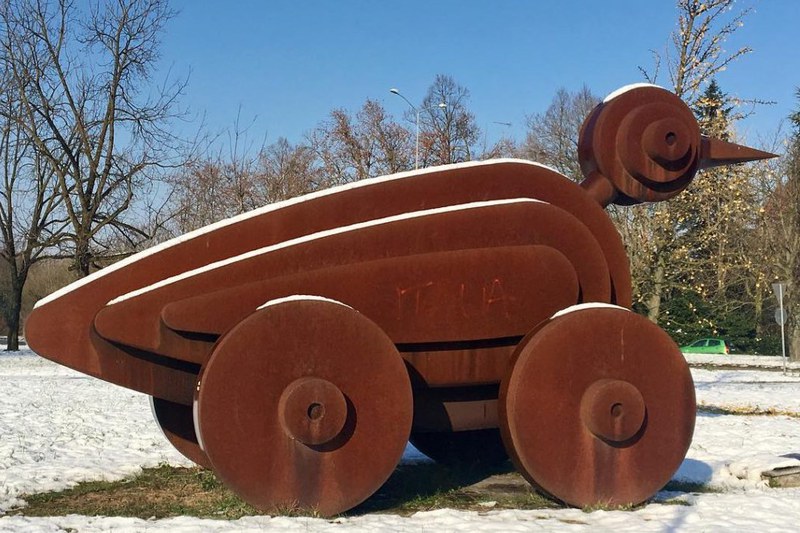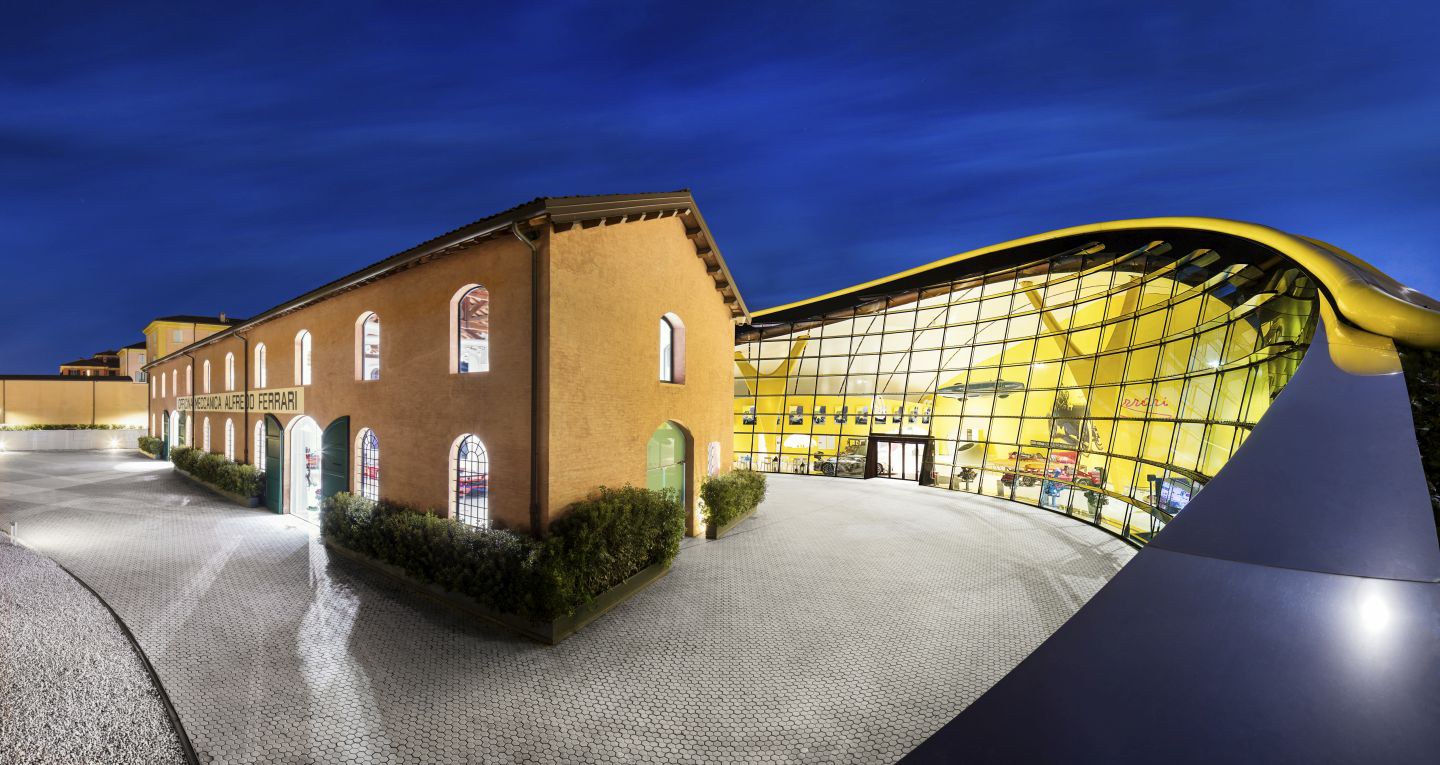Modern Architecture in Modena
Graceful, sleek, and modern. Discover some of the most beautiful examples of contemporary architecture in Modena.
To be sure, Modena is widely known for such architectural jewels as the Modena Cathedral and the Ghirlandina Tower, both of which were designated a UNESCO World Heritage Site in 1997, as well as for other buildings that are part of local history such as the Ducal Palace, now home to the Military Academy. But lovers of more modern architecture will be pleased with the suggestions that follow.
In fact, the examples we’ve chosen to highlight are sure to bring unexpected thrills to so-called “archilovers.”
Buildings and Art Installations You Won’t Want to Miss
During the 1900s, art installations were created and buildings were designed in Modena by internationally known artists and architects. Today, intertwined with more historic structures, they remain an essential part of the area’s personality.
Have we piqued your curiosity? Then here they are!
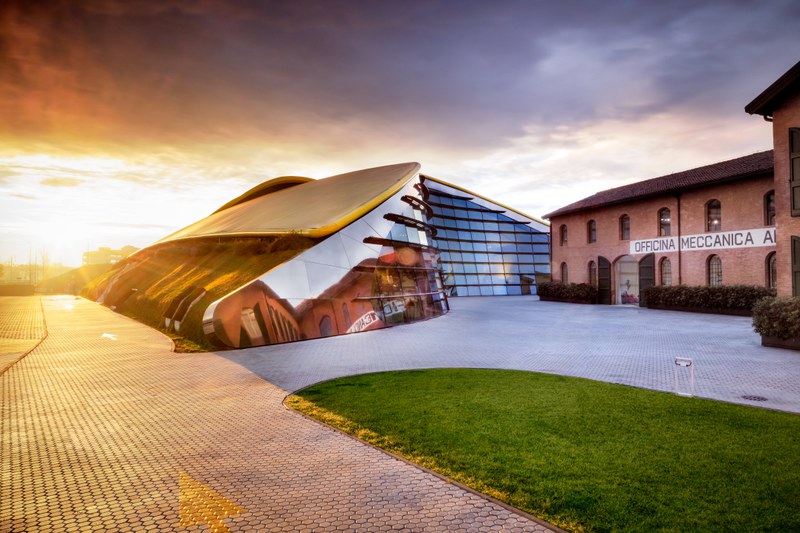
First stop: Historic Albinelli Market
The historic Albinelli Market, which dates to the first half of the 20th century, is one of the most important examples of modern architecture in Modena.
An avant-garde project at the time when it was built, the Albinelli Market has long been at the heart of local gastronomy. Today, it is certainly one of the most beautiful works of modern art in Modena as well as one of the best preserved Italian markets.
This art nouveau jewel drew inspiration from the first French covered markets. Among the market’s unusual architectural features are the black and gold insignias on the shop fronts in brickwork, the wrought iron gate, and the elegant scrollwork, also in wrought iron, which connects the supporting columns. At the center of the market is a beautiful fountain, the “Maiden with a Basket of Fruit,” by Giuseppe Graziosi.
The project was particularly attentive to health and safety and included splendid pink marble benches for the fishmongers that came complete with running water at each station and a floor designed for easy cleaning.
The Albinelli Market is definitely the best starting point for journey of discovery through the Modena area’s architecture! Ten out of ten!
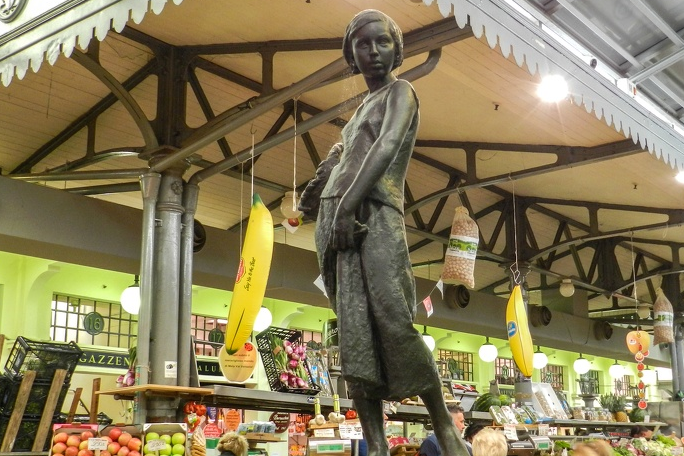
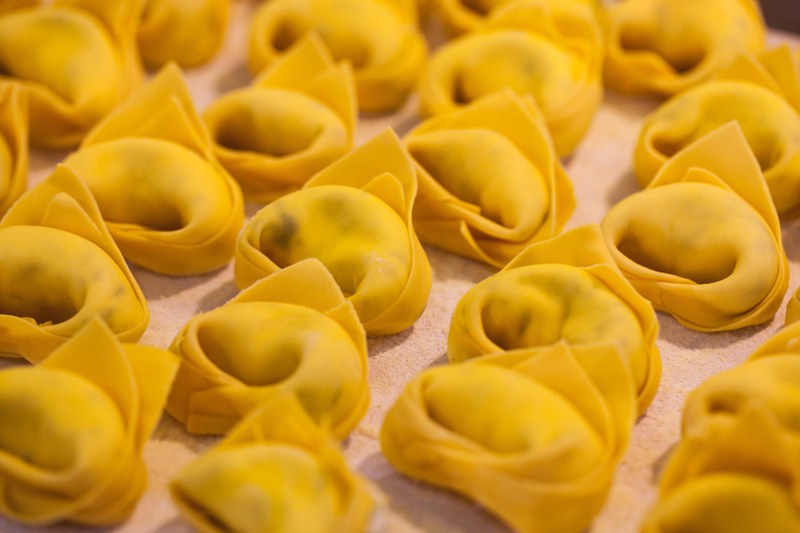
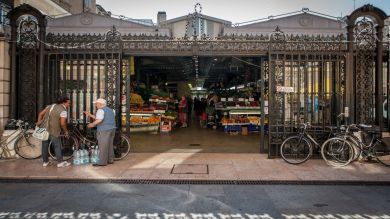
Second stop: Church of Jesus the Redeemer (Chiesa di Cristo Redentore)
Inaugurated in May 2008, the Church of Christ the Redeemer was designed by the Milanese architect, Mauro Galantino, who won a national competition organized by the Conference of Italian Bishops, which oversees religious architecture.
Christ the Redeemer is the largest church in the diocese of Modena and is one of the most unusual structures in the city, an example of minimalism in contemporary Italian architecture.
The project was planned between 2001 and 2005 and was designed to convey serenity, beauty, and mysticism through the juxtaposition of rectilinear stone surfaces and sections in transparent glass.
The style is simple, light is used judiciously, the design and structure are minimalist, and the materials are of high quality.
As an excellent example of contemporary architecture, the Church of Christ the Redeemer will surprise and excite you.
Find out more about the Church of Christ the Redeemer here.
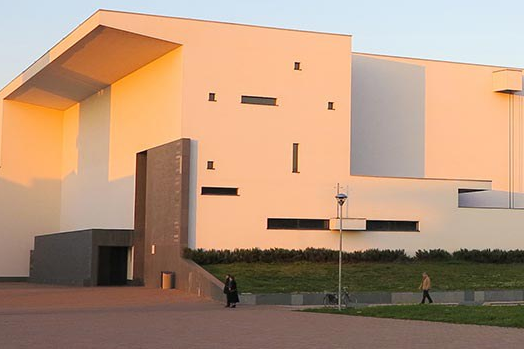
Third stop: The San Cataldo Cemetery by Aldo Rossi
The San Cataldo Cemetery is in the new section of the Modena cemetery. Designed by the architect Aldo Rossi in 1971, the project is still incomplete. It is nonetheless a masterful expression of Aldo Rossi’s poetics, who based his work on his personal connection to the meanings of death and memory.
The San Cataldo Cemetery was developed as a kind of visual metaphor. Some of its structures constitute a “city of the dead,” which contrasts with the “city of the living,” and, at the cemetery’s center stands a large cube (the ossuary) penetrated by light from many small, geometric windows.
Read all the details of this amazing project here
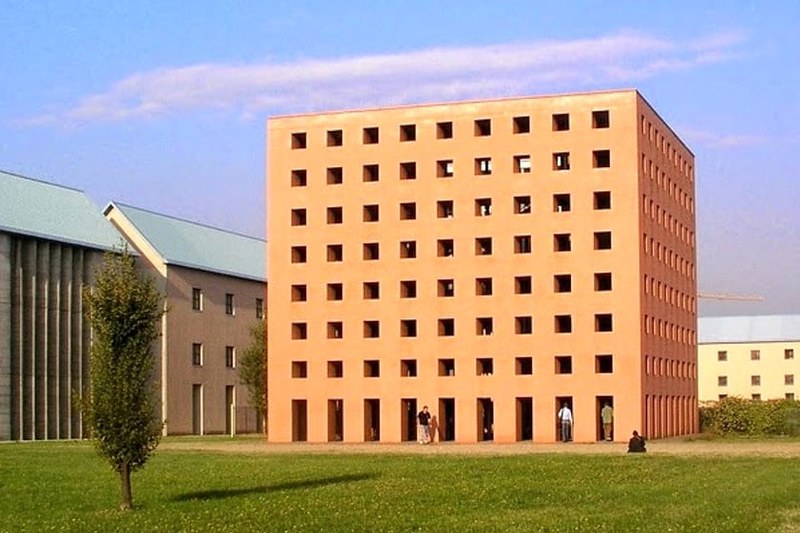
Fourth stop: The Enzo Ferrari Museum
The modern portion of the museum encloses the original Ferrari workshops and is a decidedly futuristic structure designed by architect Jan Kaplicky of the London-based Future Systems firm.
The sloping glass facade and metal roof are reminiscent of the imposing shape of a giant yellow car hood, evoking the traditions of the great automobile manufacturer, Ferrari.
Don’t forget to take home a souvenir snapshot of this one-of-a-kind building!
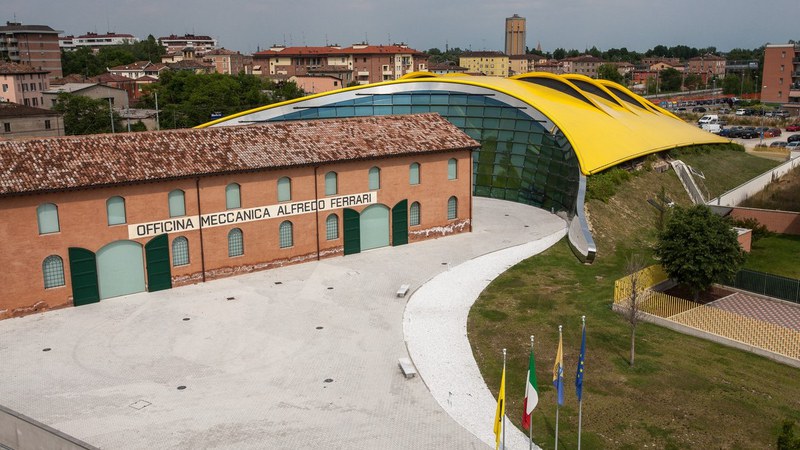
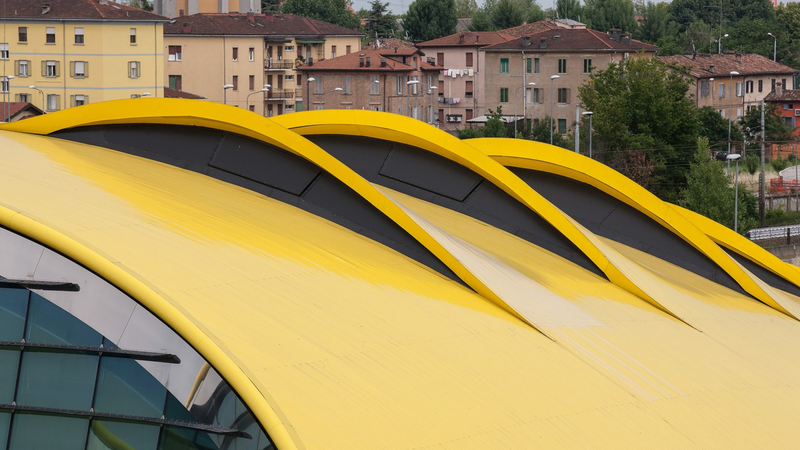
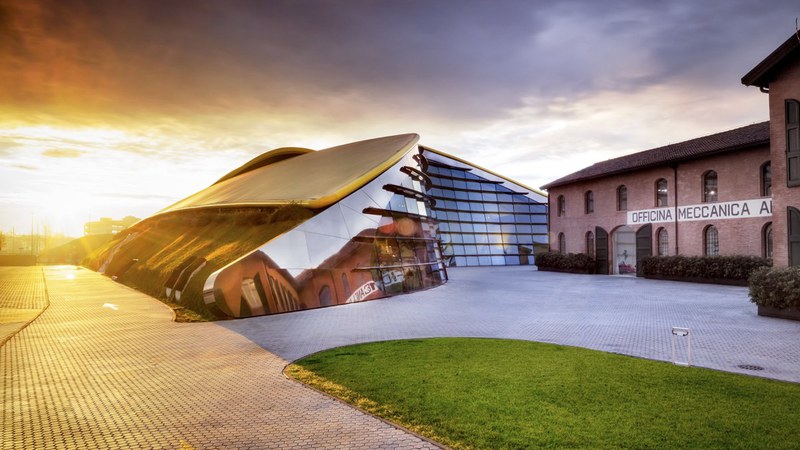
Fifth stop: The “Grande Grappolo”
At the intersection of Via Vignolese on the “Vignolese-Tangenziale” roundabout, you won’t be able to miss the “Grande Grappolo” or “Giant Bunch of Grapes.” The sculpture is more than twelve meters (about forty feet) high and is made up of some 240 blown-glass grapes.
The work, commissioned by the Historic Brand Consortium of Lambrusco Wines, was created by the Modenese master Erio Carnevali to honor the Lambrusco grape.
Imposing in its size, the cluster of grapes is both extraordinarily beautiful and one of the largest sculptures of Murano glass in the world.
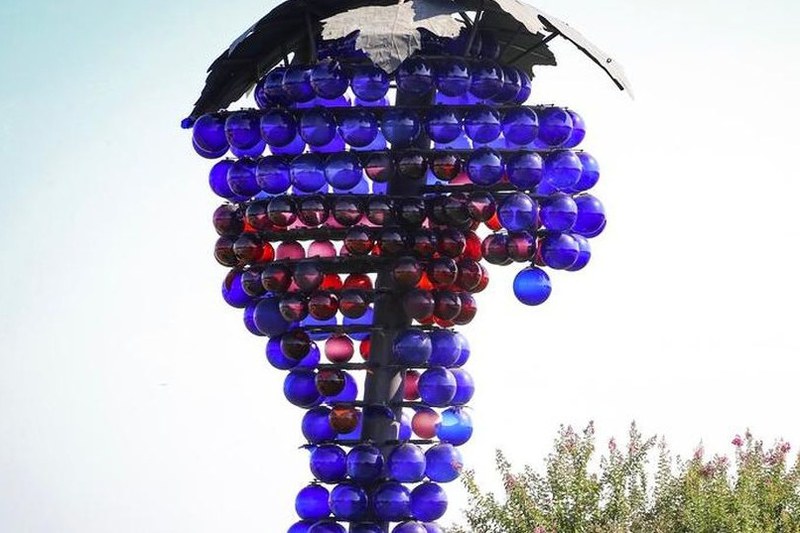
Sixth stop: Kimera Giant Goose Sculpture
The sculpture of the Giant Goose “Kimera” is located at the intersection of via Formigina and Strada Cognento on the southwest edge of Modena. It was created by Carlo Cremaschi and represents a kind of mechanical “chimera”: an enormous goose with wheels.
About six meters (or about twenty feet) high and cast entirely in steel (sixteen tons!), the Kimera Goose is “a large, rusty toy abandoned by a gigantic child” and is intended as an homage to the 20th century, an era of “cruelty and sweetness, of dreams in flight, of intelligence and brutality, of powerful illusions, great hopes, and ruinous downfalls.”
Light and heavy at the same time, the Kimera Goose was built with industrial technology and rests directly on the ground. It’s an unusual installation and deeply symbolic.
No art-and-architecture-loving visitor will fail to be astounded by these six points of interest.
For additional details or for information to better organize your visit, don’t hesitate to contact us (mettere link contatti). We’re here to help you visit our city and would be happy to build an itinerary around your interests and desires!
